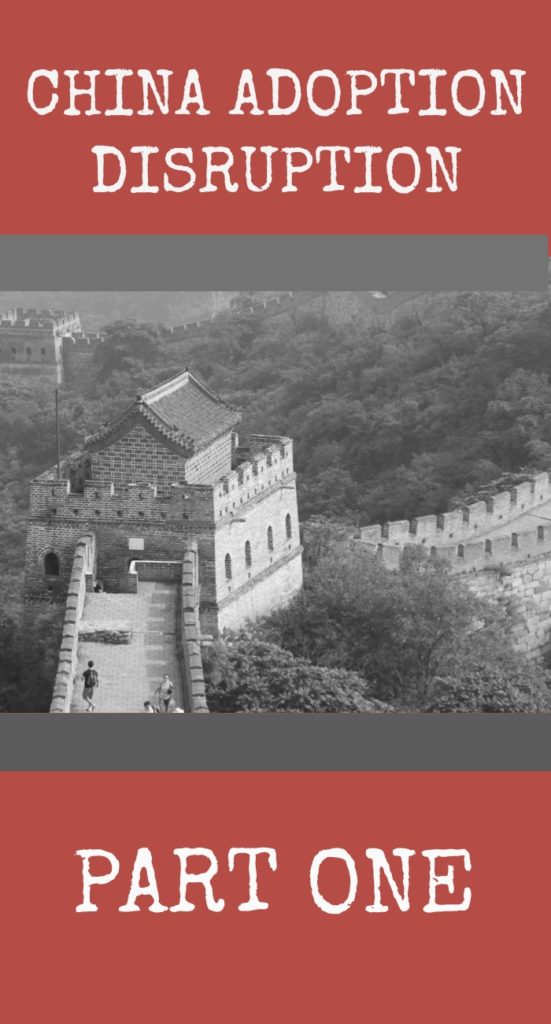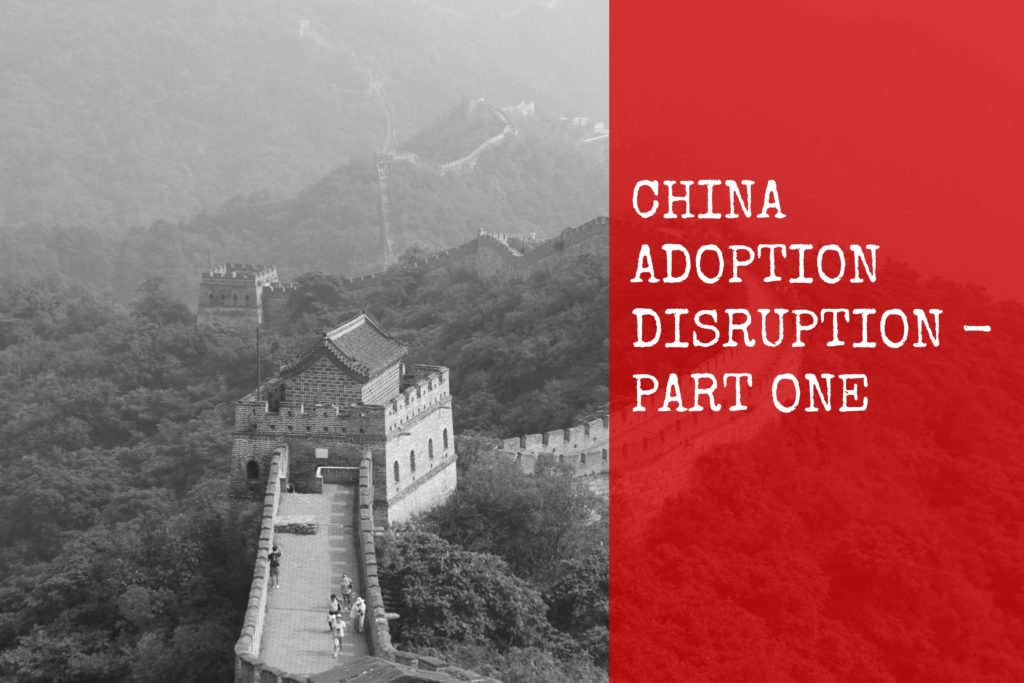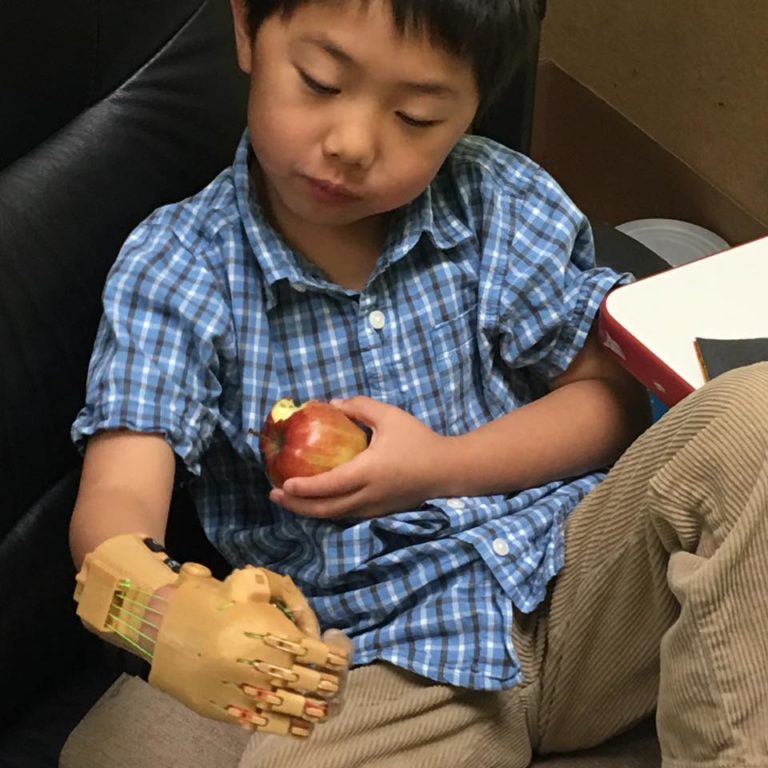China Adoption Disruption Part 1
The China Adoption Disruption blog post series was originally written in 2013. I wrote it to start conversations about something that people are (understandably) hesitant to speak openly about. To date, this is one of the most-read posts on this blog. If you find yourself considering adoption disruption, I hope you find someone to talk to about it and that you find the very best solution for your family.
Social networking gives the world a front row seat to adoption stories. Blogs and orphan advocacy websites show photos of waiting children that capture our hearts and sometimes break them.
“Special needs” means something different in international adoption circles than most people in the United States think it means. If you’re born in China, a cleft lip, club foot or a birthmark may result in abandonment and life in an orphanage. These kids are often adopted by American families. Their needs are managed, even corrected. Families are built. Children thrive.
We see YouTube clips of children placed in the arms of their new families. The joy on the face of the mom as she holds the child that she has waited for and prayed for brings a tear to almost any eye.
Facebook and Instagram show happy children with captions such as “one less” or “orphan no more.” We watch scared, fragile children bloom and flourish. Thin limbs fill out and pale cheeks turn rosy with good nutrition and fresh air.
“Look what love can do.”
We read happy adoption. The internet sees what a wonderful blessing adoption is.
I think adoption rocks. Adopting our boys was the best decision my husband and I ever made but there is a less rosy side to adoption, an ugly side that we “virtually” whisper about but rarely discuss openly.
I am going there. I an writing openly about my thoughts on China adoption disruption.
Disclaimer:
I know the China Special Needs program. I know little about domestic adoption or other programs.
Nothing personal. I’m doing my best to be respectful in discussing why I think a decision I’ve never had to make is wrong. I’m not holier than thou and I’m fully aware I’m criticizing shoes I’ve never had to walk in.
Adoption disruption – termination of an adoption before it is legally completed. An example of an adoption disruption would be a family deciding shortly after meeting their child not to continue with the adoption. The child is returned to their orphanage and the parents return from China without a child.
Adoption dissolution – termination of an adoption after it is legally completed. An example of dissolution would be a family seeing the process through in China, bringing their child back to the United States (where they are automatically granted citizenship) and then deciding to sever the parental relationship. Typically this is done by “re-homing” the child. Many adoption agencies facilitate “second chance” adoptions to help place children in this circumstance in to loving homes. Illegal, underground “re-homing” has received some press recently. Second chance adoptions are essentially domestic adoptions when handled according to the law of the state where the dissolution takes place.
Here are a few facts about adoption which illustrate the deliberateness of the process and what the family’s options and commitments are along the way.
- Parents get limited information on their child when making their decision to adopt. An adoption file contains pictures that may or may not be recent and a few pages of medical and information that may or may not be accurate.
- A family can have a physician review the file and give input on any medical conditions present. An international adoption doctor will usually give the worst case scenario based on the information presented.
- Once the family moves forward with a child no other prospective parents get to see the file. The child is “off the shelf” for the rest of the process, no matter how long the adoption takes. I know the terms are distasteful but that is the way it is.
- A family can use a third party service to get updates on the children while they wait. There is a nominal fee for these updates and most orphanages will cooperate with the third party services. An update consists of new pictures and some Q & A. Parents can inquire about developmental milestones, likes and dislikes, and such.
- The child being adopted may or may not know they have a family coming. At a certain point in the waiting process, the family is allowed to send pictures and gifts. The orphanage isn’t required to give these things to the child and some don’t. Sometimes, the child will be photographed with the gifts and the pictures will be sent to the parents. Sometimes the gifts will be sent with the kids on adoption day, unused. I felt very fortunate when I got dog-eared and dirty photo albums with our children. I’m not sure they understood the enormity of what was going on, but at least someone had tried to explain it to them.
- Small children are too young to understand what it means when someone tells them they’re getting a new mommy and daddy. Older kids who might be resistant to adoption may not be told what’s going on until they’re being whisked away to meet their new parents.
- There are two times in the process when parents are required to sign paperwork saying they will never abuse or abandon that child. The first time is at the very beginning of the process and the second is at the very end of the process in China, the day after you meet the child for the first time. This paperwork is submitted to the Chinese government and signed and red ink fingerprinted about ten trillion times. Anyone coming into contact with this paperwork understands that they mean business with this whole “never abandon” thing.
- Ironically, China views foreign adoption as a privilege, not a right. Given that these children have been abandoned by their birth families, that logic may seem a little faulty, but think about this: China isn’t required to allow us to adopt these kids and we’re not entitled to do it. China does not seek us out to adopt their children. It is entirely the other way around.
- Children raised in orphanages are going to have delays in addition to whatever medical condition/special need they’re labeled with. As babies, they might be bundled in six layers of clothing and confined to a crib all day. Motor development and muscle tone might not be on target. They might not walk, talk and eat the same as other kids their age. Some Chinese babies are bottle fed for much longer than what we would deem normal. Imagine a three year old that has to be taught to chew. These kids might not make eye contact because they haven’t interacted with people. They might self-soothe because there hasn’t been anyone to comfort them. They might have lice, scabies or sores on their bottom from sitting in the same diaper for hours.
- Some orphanages are great. Some suck. Some kids get lucky…others don’t. There are hundreds of orphanages in China. China is a big, big place, people.
- Parents are required to go through parent education monitored by a social worker. This varies by agency and state. This training is supposed to prepare families to parent the post-institutional child. But does it?
So there you go. Despite a rigorous, well-defined adoption process, this doesn’t work out for all families. There are some families that don’t have the “happy ending” adoption stories and for some families, love is not enough. There are families that get approved to adopt that probably shouldn’t be approved to adopt. There are families who don’t get the level of parent education that they probably need.
[Tweet “Adoptive families often get on the plane to China with unrealistic expectations. #adoption”]
There are families who get on the plane to China with unrealistic expectations of what is about to happen. This is a 3-part series on China adoption disruption:
PART TWO PART THREE
If you're interested in reading a variety of perspectives on adoption, check out the #AdoptionTalk Linkup every first and third Thursday right here.

Thank you for being here, friends.

Follow Ripped Jeans and Bifocals's board Adoption Talk Linkup on Pinterest.









Can you please provide me a telephone number to contact you, Jill? I would like to talk with you and ask your advice. Thank you. Please text me at XXX-XX-XXXX.
Hi Betty,
I’m afraid I don’t give out my phone number. The best way to contact me is via email, which is in the contact info of this website. Thank you!